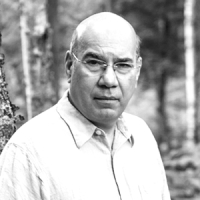Each year in early spring, during the season of Lent, which begins on Ash Wednesday and concludes on Easter, a plenitude of books, magazine articles, and television shows about Jesus appear. The reasons for this are many and, mostly, obvious. Jesus sells, for a start. And there are millions of people devoted to his teaching and self-sacrifice, in a variety of Christian sects. Even among those who have no special allegiance to a particular branch of Christianity, there are plenty of seekers as well as agnostics and atheists who harbor a certain curiosity about Jesus and his story.
And why not? Jesus remains the most influential person in history, one who has inspired untold followers for millennia. Some consider him the Son of God, the only way to eternal salvation. Others consider him an ethical teacher whose pronouncements in the Sermon on the Mount offer a way of behaving in the world that promotes solace as well as social justice. Wars have been fought over him: a remarkably ironic fact when discussing the Prince of Peace.
Finding Jesus: Faith, Fact, Forgery, a new six-part series on CNN (where I am an occasional contributor), begins March 1 at 9 p.m. There is also a companion book, written by David Gibson and Michael McKinley, who also developed the television version.
In a novel approach, this series investigates the life of Jesus by looking at a handful of prominent relics, including the Shroud of Turin (the subject of the first program), splinters of the True Cross on which Jesus was crucified, or the bones of John the Baptist. As the program suggests, such artifacts attract enormous enthusiasm as well as skepticism. The Shroud of Turin, for instance, is a fascinating object “whether it’s real or fake, because it tells the story of Jesus’s Passion in one object,” says Duke professor Mark Goodacre.
The question always matters, of course: Is this thing for real? With the Shroud, one gets expert opinion from people like Father James Martin, a Jesuit who figures prominently in the series. “I would say that it’s most likely the image of Jesus at the moment of the Resurrection,” Martin claims.
The television version is typical, well, television. The music is overly dramatic. There are trite dramatized scenes of Jesus being arrested and tried, nailed to the cross, his body being wrapped in a shroud, and so forth. These scenes are not, in fact, so much dramatic as illustrative: we get visual representations of what people are talking about. The better moments are those where we get the actual history of the Shroud: its sudden appearance in the middle of the 14th century, its even more stunning acquisition of huge importance to the faithful when, in 1898, an amateur photographer took a picture of the Shroud and a positive image of a man appeared. Was this the actual face of Jesus?
Decades of scientific investigation of the Shroud ensued, with the conclusion by art historian Nicholas Allen in 1988 that the Shroud is a fake but an interesting one that pushes the history of photography back five hundred years. A further series of radiocarbon tests on the Shroud in 1988 suggested that it dated to the 13th or 14th century, although even this has come into question, as scientists go deeper, looking at pollen samples and so forth.
The mystery was really never solved. It was complicated by the Sudarium. A sudarium is simply a piece of cloth (like a handkerchief) put over the face of a recently deceased person, and one of these corresponding to the Shroud itself was found to have ancient origins dating to about 700 CE by radiocarbon testing. But there are many complications, and—to fully understand them—one really needs the companion book. The television version glosses over the details, as it must; yet the details are riveting. By way of conclusion, Fr. Martin says, “When we look at the authenticity of the Shroud, my gut tells me that it’s real.”
Real or fake, to me, seem the wrong categories. Useful or not as aids to faith and spiritual reflection might be better categories.
This CNN series, and the book, offer a genuinely compelling look at many aspects of Jesus’s life, which has lately come into focus with numerous fresh discoveries of gospel fragments. There is one called The Gospel of Jesus’s Wife that raises the old question of the relation of Mary Magdalene to Jesus. Was she his wife or best friend? It has always struck Christians as relevant that Mary Magdalene was the first person to witness the Resurrection on Easter morning.
This program does a service in bringing to light the pressing issue of Jesus and women. It’s clear that women played a huge role in the early church, holding the rank of deacon (Phoebe is called a deacon, and she is the person who actually carried Paul’s letter to the Romans to the Roman church.) Paul was very clear in his authentic letters (only seven of them belong to him) that in Christ there is “neither male nor female.” The idea that only men can be priests is a later development in Christianity, and it has no solid basis in the Gospels or the letters Paul actually wrote—unless you include a passage from I Corinthians, which many good scholars believe is a later addition by editors wishing to reassert the patriarchal norms that, at the beginning of the second century CE, were pushing the Christian church in this direction.
“As the decades and centuries passed, women were increasingly barred from active participation, while the Church Fathers who shaped the faith trafficked in a hair-raising degree of outright misogyny,” say Gibson and McKinley. This strain of this series would make for an excellent full-length program in itself.
Whether we’re looking at the burial box of St. James, a fragment of the True Cross, the Shroud of Turin, or some bones supposedly belonging to John the Baptist, there is always excitement and distrust, faith and doubt. In fact, for every Christian these elements always mix to some degree. Finding Jesus, the TV series and the book, are not the last word. But they raise many of the important questions that continue to haunt Christians and non-Christians alike about this mysteriously compelling faith, which attracts billions around the world.
Jay Parini, a poet and novelist, is the author of Jesus: The Human Face of God. He teaches at Middlebury College.





